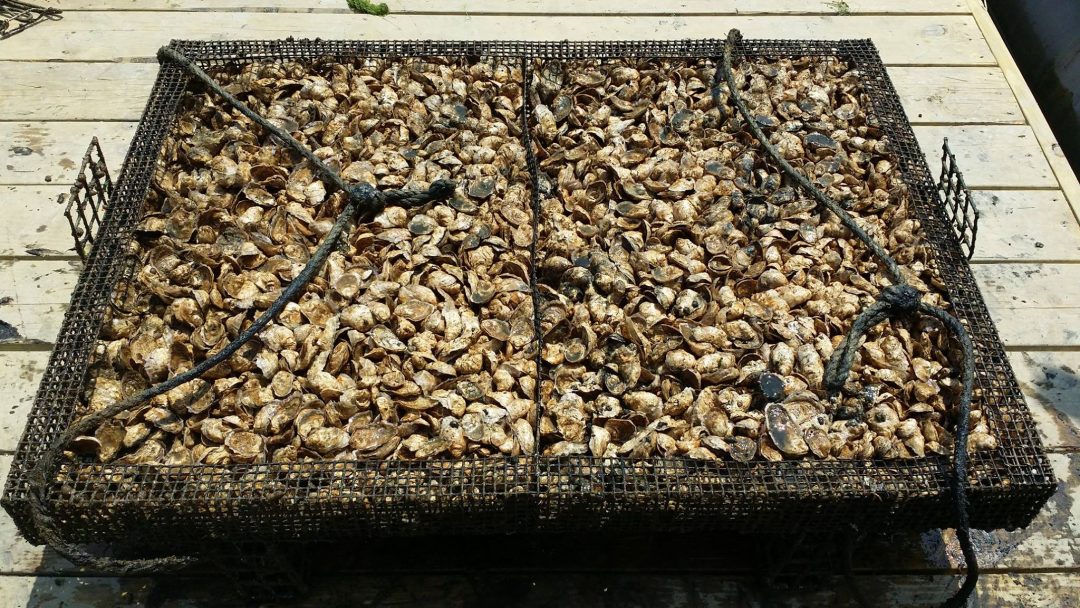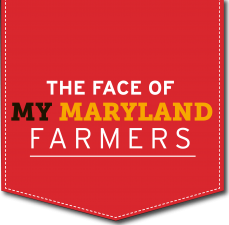 (HOLLYWOOD, MARYLAND) – Oysters are legendary for inspiring romance. If you need proof, consider Tal Petty and Na Dodchai. When Tal decided to become an oyster farmer, he traveled around the world to learn about oyster cultivation. Na was his interpreter in Thailand. They quickly discovered they shared much more in common than an interest in breeding bivalves. They fell in love, married, and returned to Maryland to start Hollywood Oyster Company in St. Mary’s County.
(HOLLYWOOD, MARYLAND) – Oysters are legendary for inspiring romance. If you need proof, consider Tal Petty and Na Dodchai. When Tal decided to become an oyster farmer, he traveled around the world to learn about oyster cultivation. Na was his interpreter in Thailand. They quickly discovered they shared much more in common than an interest in breeding bivalves. They fell in love, married, and returned to Maryland to start Hollywood Oyster Company in St. Mary’s County.
Like most of Maryland’s commercial oyster farms, Hollywood is a family-run operation. It leases 10 acres in the Patuxent River from the state where they produce two varieties of oysters, the ‘Hollywood’ and the ‘Sweet Jesus.’ Petty works with two other farms in Virginia to grow the ‘Seasider’ and the ‘VaVaVoom’ which are grown in the lower Bay and in the Atlantic Ocean. They ship their harvest to raw bars across the country.
The whimsical names reflect the flavor of the oyster, says Petty. “Every oyster from Canada to Central America is the same species. The difference in flavor comes from the character of the water. It’s like ‘terroir’ in viticulture (in which the qualities of the soil affect the wine grapes). I call it ‘merroir,’ a maritime version. The closer to the ocean, the saltier the flavor.” The two varieties from the Patuxent are sweeter while the others have more brine, salt, and powerful flavor.
Traditionally, wild oysters are harvested only in winter, but farm-raised oysters like Petty’s can be harvested and enjoyed year-round.
Farmers buy oyster larvae from hatcheries when they are smaller than a grain of sand. A million fit into a bag the size of a cantaloupe. They are suspended in water which constantly flows to clean and feed them as they grow. A few weeks later, they are ‘set’ – attached on ground up shells. After growing for a few more months, they go into mesh-lined cages and sunk into the Bay.
“Our work boats are our tractors,” says Petty. And like tractors, they are rarely idle. Three days a week, crews take the boats out to hoist up the cages and clean and sort the oysters. They are spaced so that they have room to grow to a uniform shape and size. After 12-14 months, they are 3” long and ready to be harvested. By then, those 1-million oysters that started out in a small bag are so large that they fill 40 dump trucks. You can follow the whole process here.
Currently, Maryland leases 6,900 acres of water for oyster cultivation. Aside from being tasty, oysters benefit the Bay’s ecosystem. Each oyster filters 50 gallons a day of water, contributing to clarity of the water while taking on the local flavor of their environment. The Chesapeake Bay’s oyster farms grow several million mollusks every year. Thanks to all these little filters, improved water quality supports aquatic life and the growth of healthy grasses, which in turn helps stabilize the shorelines and bottoms and create a habitat.
While shucking and slurping are the easiest way to enjoy them, oysters are easy to cook grilled, broiled, stewed, fried, or scalloped.
The state has a program for Marylanders who want to help repopulate the state’s oyster reefs. Marylanders Grow Oysters provides the supplies and baby oysters to people willing to place them in the water by their private piers. After a year, the oysters are replanted in sanctuaries where they continue to filter the Bay and improve conditions for the ecosystem.
Hungry for more? Sign up for our newsletter and find us on Facebook, Twitter and Instagram.


I have always loved the bay and am glad to see all that’s being done to clean the tributaries and bring back 👍 the grasses,🐟 fish,oysters
,and crabs.One of our greatest assets.